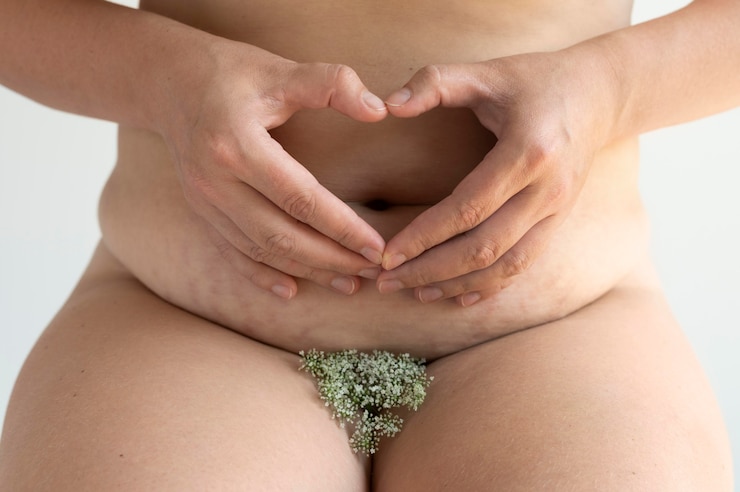
Hidradenitis Suppurativa (HS) is a chronic skin condition that causes painful bumps to form beneath the skin, primarily in areas where hair follicles are near sweat glands. While there is no known cure, treatment options can help reduce the frequency and severity of flare-ups. HS is usually managed by a team of doctors, including dermatologists, infectious disease specialists, and wound care experts, who collaborate to address the condition.
What Causes HS and Where Does It Happen?
HS occurs when hair follicles become blocked, leading to inflammation and painful bumps. It typically develops in areas prone to friction, such as the armpits, groin, inner thighs, and the area between the buttocks. Women may also experience flares beneath or between the breasts, and obesity can increase the likelihood of flares in these areas.
The bumps can become infected, forming pus-filled pockets beneath the skin that have an unpleasant odor when they are drained. After a flare subsides, scars or dark marks often remain. If left untreated, new flares may appear in nearby areas, creating physical and emotional challenges for individuals living with HS. Seeking medical care is critical to manage the symptoms and prevent recurrences.
Emotional and Community Support
Living with HS can be emotionally draining, making it essential to find a strong support system. Many people turn to online support groups or social media platforms to connect with others who understand the challenges of coping with this condition. These communities provide advice, empathy, and guidance while helping individuals navigate the emotional toll of living with HS.
Understanding the Cause of HS
The specific cause of HS remains unclear. Experts believe that a genetic predisposition paired with environmental factors may trigger the condition. It often begins in the late teens or early 20s and is more common in women, individuals with a family history of HS, those who are overweight, or smokers.
It’s important to note that HS is not caused by poor hygiene, deodorant, shaving, or being contagious. The condition often starts with a small, painful, red bump that can linger for weeks or months. Over time, these bumps may recur in the same spot or spread to multiple areas. Severe cases may lead to painful, deep wounds that can leave scars and impact surrounding tissues.
Diagnosing HS
Receiving a diagnosis of HS involves a thorough skin examination by your doctor, who will look for patterns in your flares, their frequency, and their depth. Since there are no specific tests for HS, diagnosing often requires ruling out other conditions using tools like biopsies or pus samples. To make the process smoother, it is helpful to prepare answers to questions about your symptoms, family history, and previous experiences with similar issues.
Questions to Ask Your Doctor
If you suspect you have HS, consider asking your doctor the following questions:
– What stage of HS do I have?
– What treatments do you recommend?
– Will I need antibiotics or any other medications?
– Are there specific lifestyle changes I should make?
– Is there a chance that I will need surgery?
– How should I proceed if my symptoms worsen?
– Can my HS go into remission?
Treatment Options for HS
The right treatment depends on the severity of your HS, and it might take time to figure out what works best for you. Here are some common approaches:
1. Home Remedies for Mild Flares
For minor cases, applying warm compresses to the affected area can help reduce pain and swelling. Over-the-counter NSAIDs, like ibuprofen or aspirin, may also provide relief.
2. Antibiotics
Antibiotics are often prescribed to manage infections and prevent new flares. These may come in various forms, such as pills, creams, gels, or cleansers. Commonly used oral antibiotics include minocycline and doxycycline. If these are ineffective, your doctor may recommend a combination of clindamycin and rifampin.
3. Corticosteroids
These medications can be injected directly into the flare to reduce inflammation and relieve discomfort. For more severe cases, oral steroids might be prescribed on a short-term basis.
4. Oral Retinoids
Retinoid pills like acitretin and isotretinoin are effective for treating severe HS flares. However, they should be used under close medical supervision.
5. Biologics
Biologics, such as Humira or Ustekinumab, work to reduce inflammation and provide long-term relief in advanced cases. These medications are administered through injections or, in some cases, via intravenous therapy. However, their use is typically reserved for severe cases due to potential side effects.
6. Surgical Options
For deep, recurring flares, surgical procedures may be considered. Small, localized flares can be treated with lancing, a procedure where the pus is drained to provide temporary relief. For more extensive issues, “deroofing” surgery may be performed. This involves removing affected sweat glands and hair follicles, resulting in a smoother scar and reduced discomfort. Recovery time is typically 8–12 weeks, but it may take longer if complications like infection occur. It is crucial to follow your doctor’s wound care instructions post-surgery to avoid further issues.
The Importance of Ongoing Care
While surgery can be a helpful solution for chronic cases, it does not always guarantee that HS will not return. HS requires long-term management, which may involve both medical treatments and emotional support. A strong support system can make a significant difference, as coping with the physical and mental toll of the condition can feel overwhelming at times.
By working closely with your healthcare team and connecting with others who share similar experiences, you can better manage the challenges of living with HS.